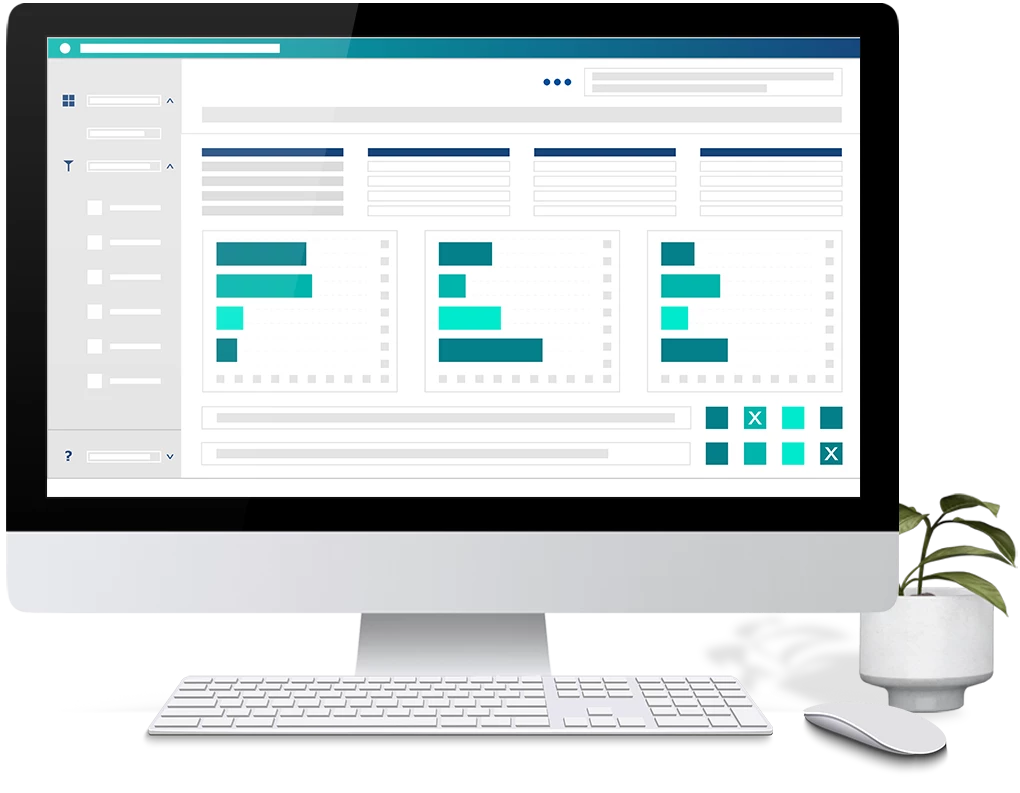BIC Process Design
Understand & Transform
Supercharge your business operations with the most intuitive AI-powered BPM software.
It seems that you come from a German speaking country. Here you can change the language
EnglishThe internal control consists of the necessary processes to detect risks that are potentially harmful to an organization and to avoid them by adhering to a compelling framework. Embedding the internal control in an organization is fundamental for compliance with internationally applicable regulations (e.g. COSO framework) or national procedures (e.g. MaRisk in Germany).

Author
Sandra Blaha


The controls in an internal control system help organizations to keep performance or a state of affairs within a range that is expected, allowed or accepted. Controls which are created within a process are internal in nature and based on a combination of components – ranging from the social environment affecting employee behavior to regulations, methods and other essential information. The internal control structure outlines which of these various components are included in the controls. This plan is an important assurance for the company's efforts to maintain an overview of compliance within policies, processes and authorization limits.
Internal controls can also extend to intercompany controls in financial reporting, IT controls, compliance controls, and export controls and customs (ECC). Since these areas are very different in nature, the monitoring must be individually configured to fit the specific purpose. The approach for each of these disciplines, however, is the same:
Check effectiveness: Test the design and operational effectiveness on a regular basis.
The internal control cycle describes the six stages which are used by the internal control of an organization in order to review the measures of governance, risk management and compliance. Furthermore, it is the basis to initiate improvement measures. The tasks, competencies and responsibilities for the process participants are transparently defined for each individual stage. The first stage of the internal control is the (1) scoring, where the processes of an organization are identified and delimited. The objective of the scoring is to qualitatively and quantitatively evaluate processes based on their possible effects and to set review rhythms. This is followed by the (2) risk-control-identification, where a risk control matrix is established to make sure all process risks are covered with key controls. With the (3) control-design-assessment, the internal control examines the adequacy of the key controls, i.e. whether a defined control is suitable for reducing or averting the corresponding process risk. During the (4) testing stage, the internal control determines whether a control is feasible, reasonable and effective according to the pre-defined specifications. The (5) measures for optimization can be derived from previous steps. Both the effectiveness and adequacy of controls are critically reviewed and optimization requirements are defined so that controls can withstand future examination. With the (6) re-testing previous tests are repeated to ensure improved effectiveness and adequacy. Since the processes of an organization are subject to constant change, an effective internal control must regularly re-start with the scoring and run through the whole cycle again.

The COSO Framework (Commitee of Sponsoring Organizations of the Treadway Commission) forms the basis for internal controls in organizations. This internationally recognized framework describes the governance of financial reporting. Compliance with the COSO guidelines, verifying the effectiveness of a company‘s financial reporting, is required by law in many countries around the world (e.g. SOX in the United States). The current "Enterprise Risk Management" framework contains the following elements: Governance & Culture, Strategy & Objectives, Performance, Control & Revision and Information, Communication & Reporting.

Audits and control measures of the internal revision aim at a continual improvement of business processes, making them more transparent as well as defining preventing actions against malicious acts. With the internal control as a basis, the internal revision organizes its workflows in accordance with the relevant guidelines (e.g. MaRisk in Germany) and organizational requirements. This way, the internal revision gains an overview of critical business areas as well as infrastructures and can consistently pass through the compliant and targeted controls.
As part of the implementation, relevant challenges should be considered at an early stage in order to ensure success:

Our ICS software enables the development of a future-proof, efficient management system. You find all information on all controls in one system (i.e. single point of truth).
Whether you prefer a custom design or pre-built solution, GBTEC offers the right software for your needs.
See for yourself and discover our BIC GRC Solutions for professional internal control.

BIC Custom GRC offers customizable, flexible custom solutions that can be tailored to the client’s unique processes.

BIC Internal Control is our intuitive, fast-to-implement standardized solution that fulfills leading standards.

GRC Solution Architect
Sandra Blaha combines her deep hands-on experience from the auditing world with a strong academic background, including studies in Business Law and Business Administration at the Vienna University of Economics and Business, as well as a master’s degree in Risk and Process Management. Since 2021, Sandra has been applying her diverse expertise as a GRC Solutions Architect at GBTEC, where she plays a key role in developing, customizing, and improving the BIC GRC standard solutions. Her main areas of focus include risk management, internal control systems, sustainability management, and internal auditing.